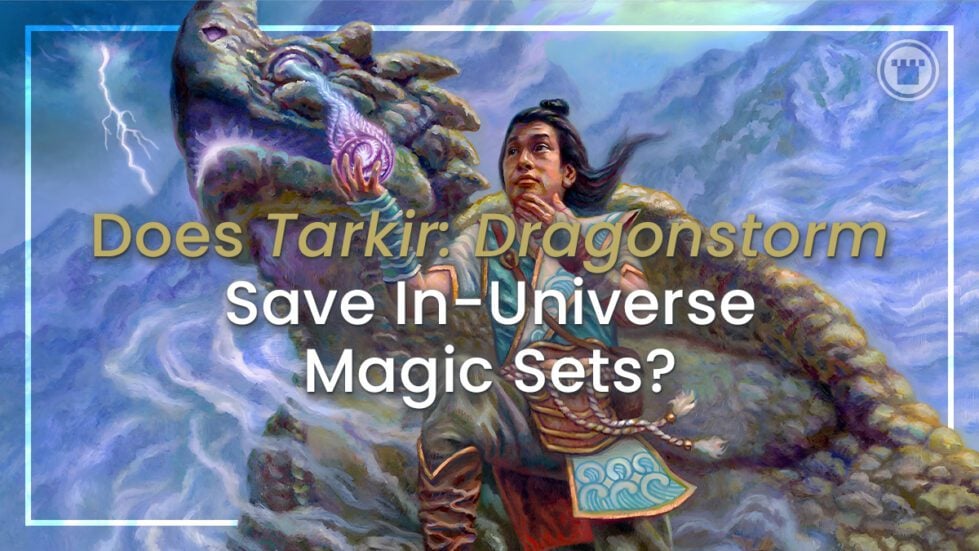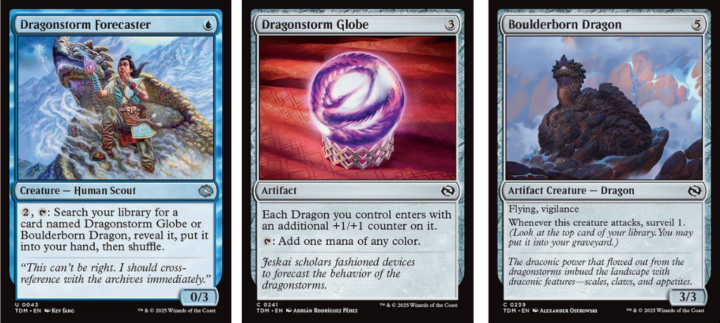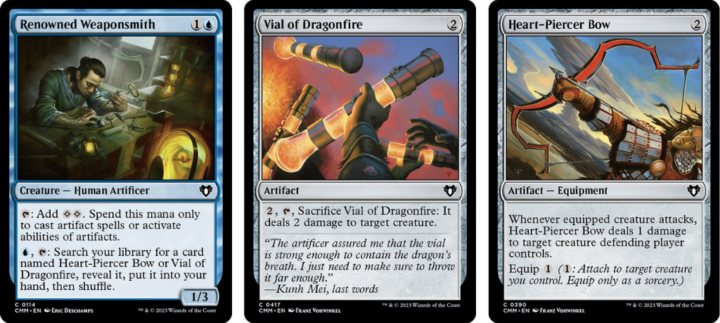It’s a Saturday afternoon, and the warm English spring sun is lighting up the room in the kinda way you have to shut the curtains if you want to play a video game. I’ve just picked up and eaten lunch, after a morning outside, and I’m finishing the dishes. In the background, Luis Scott Vargas is discussing his Sealed pool as Eilidh Lonie and Paul Cheon prepare to take us through a day of Sealed and Draft coverage.
Is this 2016? 2018? It certainly feels like it. It’s actually 2025, and it’s also the first time I’m watching a Tarkir event live. I’m not going to lie to you – for a hot minute there when Arena was the be-all and end-all of coverage, I checked out. I really did. Arena feels cold and clinical. The tempo is set by timeouts and animations, not by moments of introspection and clarity. It turned into something that didn’t really feel all that special.
What is special is watching a Limited event and getting to watch the best players in the world playing an awesome limited set.
TARKIR: DRAGONSTORM LIMITED
I got my first taste of this set during Prerelease weekend, and I had an absolute blast. I picked up a Mardu pool, but ended up with rares that didn’t really help with that plan in the slightest.
I followed my removal and my fixing, and ended up in Jeskai, splashing for two Mardu spells. It was a very 3-1 deck, and yeah, I took that 3-1 and couldn’t make it a 4-0. Playing against double Voice of Victory is kinda rough in Sealed, right? Still, I had some really fun struggles for dominance, and it felt like a well-balanced format.
I had a Jeskai Revelation, and generally speaking, even if it is more of a sealed card, there were matchups where it felt better to play than others. I ended up siding it in vs Abzan, Sultai and Jeskai decks, but it was slow against the few Mardu decks I played against. I got to live the dream with Monastery Messenger, and I had a lot of fun. Interesting how it’s entirely a playable card even in Draft, now we’ve had the chance to playtest more.
What was interesting was I completely dismissed the Dragonborn Globe and Boulderborn Dragon in my pool, which says a lot about how past perceptions can color your analysis. While I didn’t have the Dragonstorm Forecaster, I still probably should have played those cards.
I only played an OG Tarkir block draft once as a flashback draft, but the set of cards that inspired the now infamous “solved” limited format deck’s backbone aren’t anywhere near as good. Turns out fixing that gives an extra point of power and toughness is actually huge in a format that can end up with so many options to trade creatures, both in the air and on the ground.
TDM Limited was one piece of the puzzle, and in many ways this puzzle piece had to be done right. Tarkir has a huge legacy, and so failing on making a good Tarkir limited format would be a huge dent to Wizards’ reputation. Enter Spotlight: Dragons.
SPOTLIGHT: DRAGONS TAKES ME BACK
As I settled down with snacks and drinks to watch the Limited coverage, I had some time to think about what makes for compelling coverage. Talent is one thing, sure – and seeing faces in the booth that I recognized went a long way. The decision to follow LSV and Reid Duke as far as they could make it was inspired, and hinged heavily on the format being enjoyable. Enjoyable, yes… but also accessible.
One of the biggest barriers to entry for Magic coverage as a spectator sport is that it requires a lot more frontloaded knowledge. You can drop into any FPS or Sports game, any Fortnite style survival game on Twitch, and know what’s happening, who to root for, and how the mechanics work. You can pick up the finer details as you watch.
Magic’s pursuit of this wider casual audience in the early years of Magic Arena and Magic as an e-sport, in the past 6-7 years, may well have been a huge mistake. That audience is always gonna cap out at “people who actually understand Magic and can recognize the cards by the art”. Limited is the endpoint of that investment, the audience that requires the most frontloaded knowledge – never more so than when there’s a tournament for a new format. While Magic is arguably too complex for a casual Twitch viewer, it still helps a lot that TDM doesn’t feature walls-of-text on every rare, and doesn’t track outside-the-game mechanics. It makes it way more accessible to a casual audience, and by extension, to the average Magic player.
At the end of the day, the people who are going to be invested in watching Magic played at the highest level are highly invested Magic players. Coverage and tournaments should really be tailored towards them, and honestly? Limited Premier Events are a massive part of this landscape.
Limited is the format in which amateur Pros can indulge their competitive side. It’s the format that doesn’t require $2,000 and upwards for a deck, a deck that may be obsoleted by new chase cards in a Modern Horizons set. You can be good at Limited, and pick up a format, in a short amount of time. You can understand enough about it to feel good at it, and that’s the exact audience that thrive when they can spectate their hobby being played at the highest level. When the audience can identify with what’s happening, and it feels in reach? That’s magic, and that’s Magic at its best.
Spotlight: Dragons took me back to when I was drafting like a fiend. It took me back to going undefeated during Amonkhet draft at my LGS. It took me back to beating a Silver Pro during War of the Spark sealed at Pro Tour London. That feeling is priceless, and it’s how you cultivate that dedicated audience. If you can give people that feeling again, you’re onto a winner.
Packaging a good Limited format with a nostalgic tournament set up is a fantastic decision. And, while LSV and Reid didn’t go all the way, we had plenty of people to root for, including eventual Champion Andrew Baeckstrom. The Top 8 qualified for Pro Tour Magic: the Gathering — FINAL FANTASY, a set that feels worlds apart from TDM.
TARKIR: DRAGONSTORM FEELS LIKE MAGIC
As I mentioned previously, Limited is only one part of the puzzle. TDM Limited hangs upon a return to Tarkir, a beloved Magic plane. Tarkir is where Siege Rhino Changed Magic Forever. It was the final three-set block, and therefore holds a place of nostalgia for those who miss that kind of storytelling. It’s also one of the best examples of a high-fantasy Magic setting that’s both inspired by real-world cultures, and still distinct and cool.
More importantly, it comes off the back of a series of disappointing “hat sets”, beach-episode sets that felt pretty lacklustre; Murders at Karlov Manor, Outlaws of Thunder Junction, and Aetherdrift. An occasional reference is fun, but when the sets are just a pastiche, they fall flat.
It feels a little hand-waivy to say that TDM’s success is down to it being nostalgic and “safe”, especially in the context of Universes Beyond, but it’s an important point to consider. I personally feel like TDM’s blossoming popularity has more to do with a consistent art-direction, good gameplay and mechanics, and lack of beating people over the head with tired references. It’s the first in-universe set for a while that feels like classic Magic, which is pretty damning to say. It’s also why, when I talked about my hype for the set previously, I shared how I felt positive for Final Fantasy despite having never played one in my life. I’d never been to Tarkir before besides a flashback draft, and I still love everything about it. It’s as much about execution as it is concept.
Mark Rosewater does continue to clarify that it’s essentially easier to push the boundaries and experiment in Universes Beyond product, and that they are effectively trying to serve the long-time invested high-fantasy loving crowd with in-Universe sets being closer to the “core” experience.
Does that work? Is that a good thing?
DOES TARKIR DRAGONSTORM SAVE IN-UNIVERSE MAGIC SETS?
In the short term? Probably. It at least stems the bleeding that we’re seeing from more entrenched players who have become frustrated. Here’s the thing, though – many of those players may dislike Universes Beyond, but can be fine with it as long as the in-universe sets are actually “good”. Good to that cohort roughly correlates with Mark Rosewater’s words; high-fantasy, nostalgic, and lighter on the “boundary-pushing”.
Boundary-pushing can work, of course – just look at Kamigawa: Neon Dynasty – but if those boundaries are pushed by hats and playing detective, maybe not so much.
At least for me, TDM seems to have cemented itself as a classic set, and one I’m eager to draft more of. That’s more than I can say of the last few sets. But where does the future take us? What will our in-universe sets give us, and will it be enough?
If they’re all like this one, then it’s going to be great. The burden of proof is on Wizards at this point, and I think if they fumble the bag a few more times, the older players who were already leaving the game to buy houses and build families might sing their final songs and sell out for good.
END STEP
If you want to live the dream and get your globe on drafting TDM, come brush up on TDM Limited with our Draft Guide by Tom.

Kristen is Card Kingdom’s Head Writer and a member of the Commander Format Panel. Formerly a competitive Pokémon TCG grinder, she has been playing Magic since Shadows Over Innistrad, which in her opinion, was a great set to start with. When she’s not taking names with Equipment and Aggro strategies in Commander, she loves to play any form of Limited.



